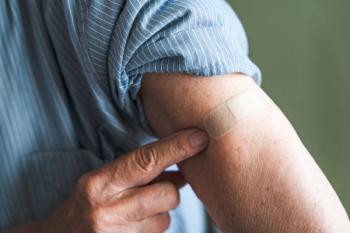
Study: HPV Vaccine Does Not Increase Risk of Primary Ovarian Insufficiency
A retroactive study finds no connection between HPV and other vaccines and primary ovarian insufficiency.
Although concerns have been raised by the public about a possible connection between the human papillomavirus (HPV) vaccine and primary ovarian insufficiency (POI), a new study found no increased risk of POI in patients who received the vaccine.
Researchers hope the findings of
The study, which was led by Allison L. Naleway, PhD, and colleagues, examined electronic health record data from Kaiser Permanente Northwest to identify female patients between the ages of 11 and 34 who had diagnoses that could suggest POI. They then reviewed the medical records to confirm the diagnosis and to estimate the dates when symptoms began. Using this information, they were able to calculate the overall incidence of idiopathic POI.
They found a total of 120 diagnoses that were suggestive of POI out of a sample of 199,078 patients. Overall, the incidence of POI was low among the youngest participants in the study, with an incident rate of 0.87 per 1,000,000 person-months for those female patients who were between the ages of 11 and 14 years old. The incident rate increased as age increased, the authors of the study reported.
Of the 120 diagnoses that were suggestive of POI, only 46 were considered idiopathic cases. The adjusted hazard ratio for POI was determined to be 0.30 (95% CI, 0.07-1.36) after the HPV vaccine.
The researchers determined the adjusted hazard ratios for other vaccines as well and found a hazard ratio of 0.88 (95% CI: 0.37-2.10) after the Tdap vaccine, a ratio of 1.42 (95% CI: 0.59-3.41) after the inactivated influenza (II) vaccine, and a hazard ratio of 0.94 (95% CI: 0.27-3.23) after the vaccine.
"We did not find a statistically significant elevated risk of POI after HPV, Tdap, II, or MenACWY vaccination in this population-based retrospective cohort study," the authors of the study write.
According to
Newsletter
Pharmacy practice is always changing. Stay ahead of the curve with the Drug Topics newsletter and get the latest drug information, industry trends, and patient care tips.






















































































































